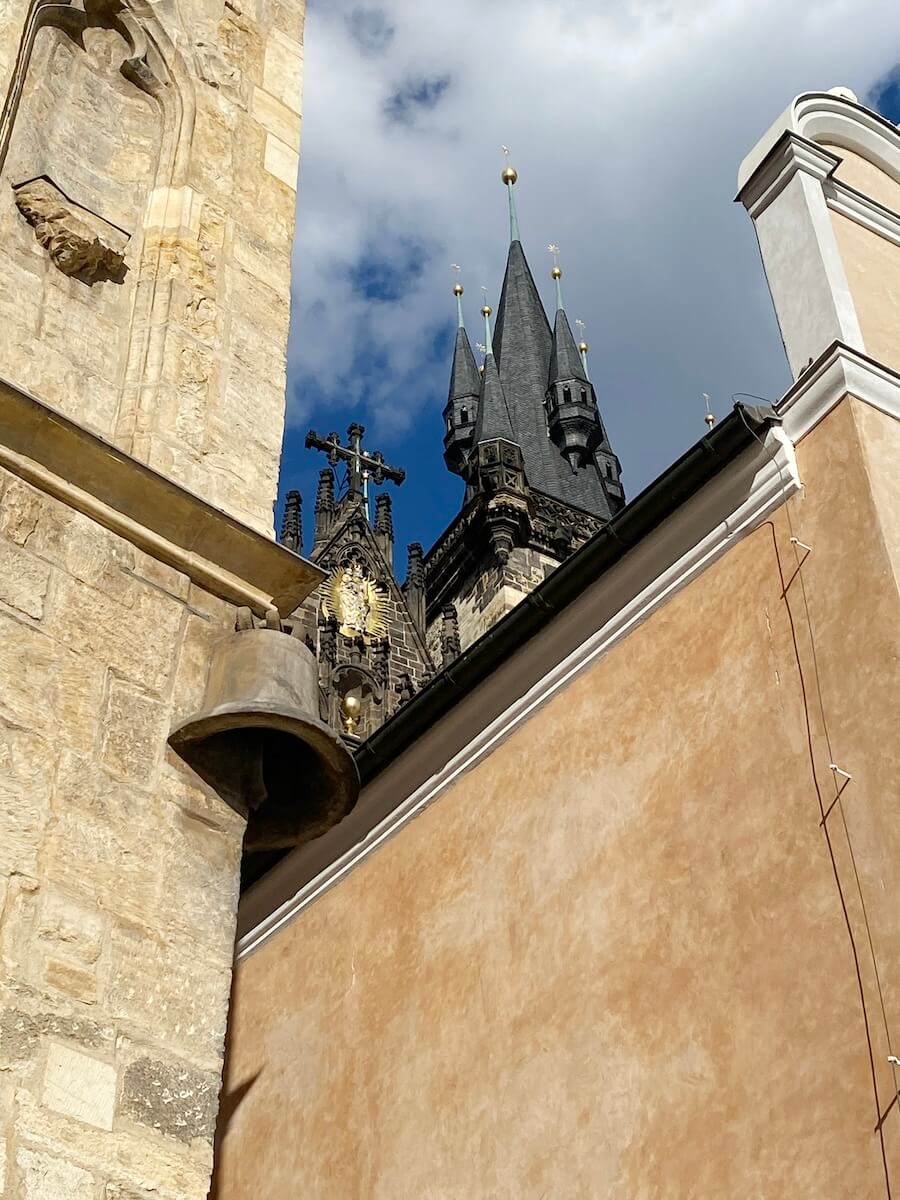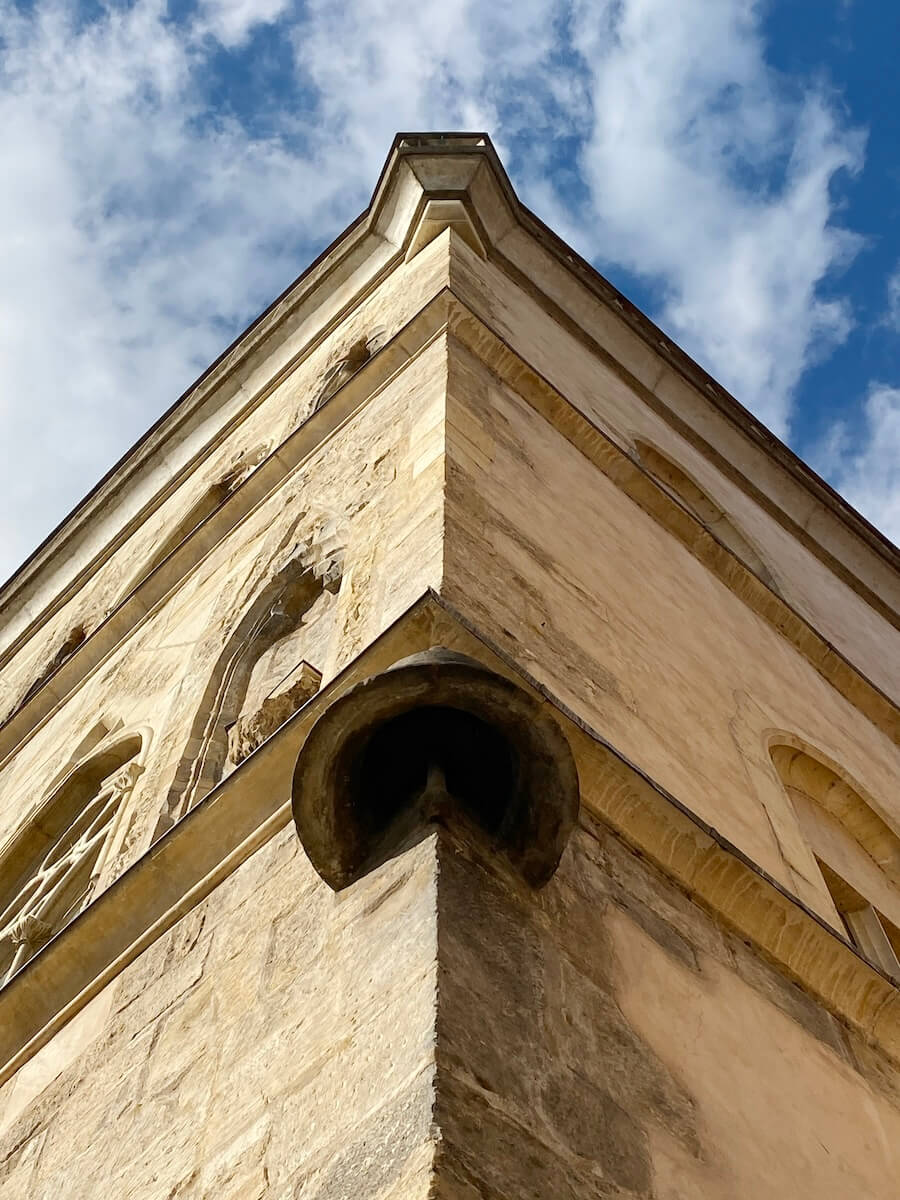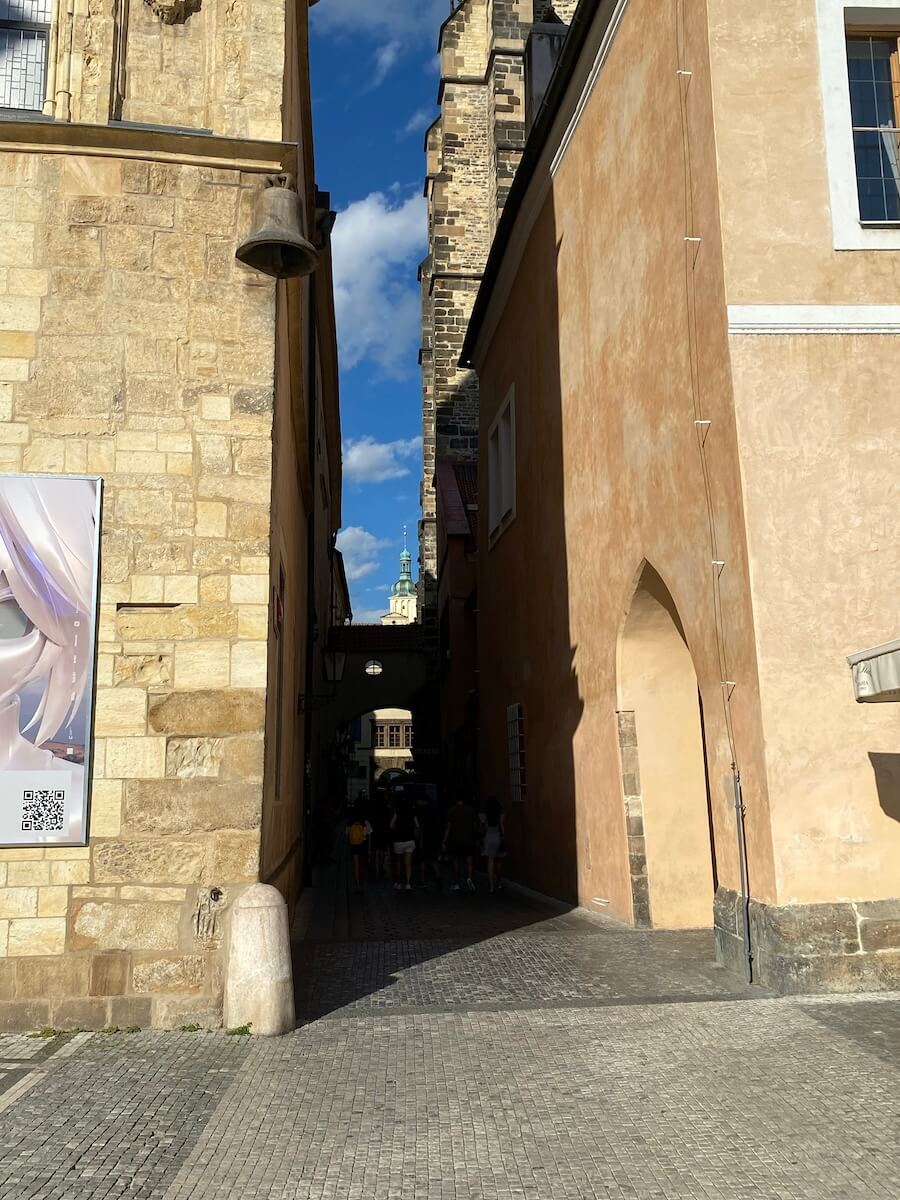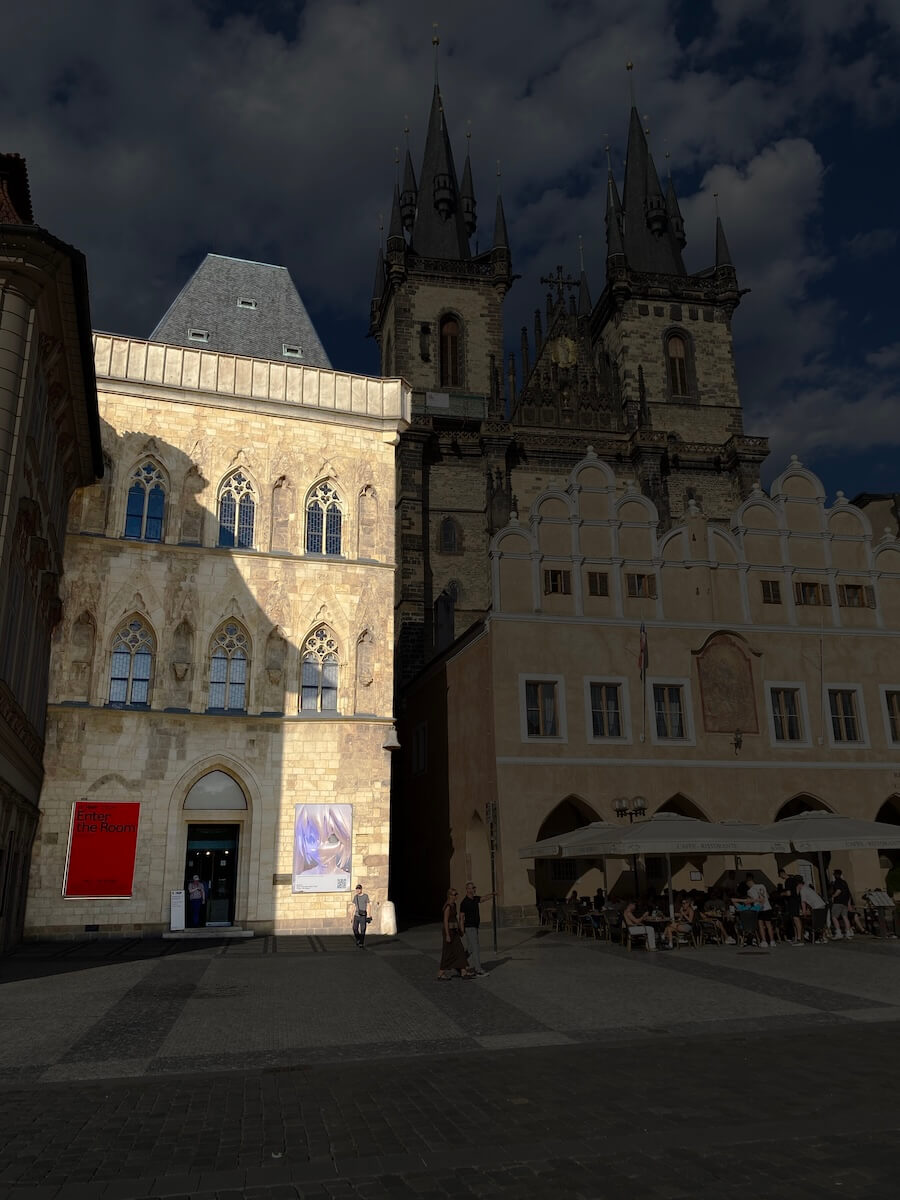- Home
- Hidden Details
- House at the Stone Bell
Where in Prague? - House at the Stone Bell
The House at the Stone Bell may not be high on your list of things to see on Prague’s Old Town Square. You've probably never even heard of it. That's completely understandable. The square has so many sights, competing for your attention.
 The bell for which the House at the Stone Bell is named
The bell for which the House at the Stone Bell is namedEach side of the square has its own wonders. Plus the astronomical begs your eyes to linger.
Once you have a good look around - after you feel less overwhelmed - navigate yourself toward the Church of Our Lady before Týn. It's the one with the mesmerizing black Gothic spires.
Now, drift just a few steps toward the shadow of those famous towers - to the left side of the church, but still on the square. You'll see a squatty quieter looking building. Maybe a little stern and far less decadent than many others.
Now, look up on the corner of this building. Do you see it?
There's a small stone bell carved into the edge of the house.
You might miss it on the first pass - most people do. But this detail is more than just a quirky ornament. It’s the namesake of the this building: The House at the Stone Bell (Dům U Kamenného zvonu).
This Gothic townhouse that has watched over the square since the 13th century.
That means it pre-dates the astronomical clock and the church.
There’s something captivating about this spot.
Maybe it’s the way the building seems slightly out of step with its neighbors. It's little pointed windows and clean stone feel more more monastic.
Well, that’s no accident.
The House at the Stone Bell is one of the best-preserved Gothic buildings in Prague, and likely once served as a temporary royal residence for Charles IV when he was a boy.
You wouldn’t know that just by glancing at it today. But then again, Prague has a habit of hiding wonders behind modest facades.
Step inside and you'll find rotating exhibitions offered by the Prague City Gallery. Normally, contemporary art is their go-to of choice. I've seen a few interesting exhibitions including an expansive collection from Tim Burton.
Even if you’re not in the mood for art, it’s worth a peek just to walk through the cool stone halls and imagine the footsteps that came before yours.
Or, head to their cellar for a free peek at the frescoes from the mid-13th to 14th centuries.
But what about that stone bell outside?
 Looking up at the bell on Old Town Square
Looking up at the bell on Old Town SquareWhat about that stone bell outside?
Some say the stone bell commemorates a rebellion, perhaps even a victory over pagan forces and it was displayed as a symbolic sounding for people to take up arms.
Others believe the House at the Stone Bell marks a quieter but far more pivotal moment in Czech history.
In 1310, legend has it that a priest named Berenger, acting on behalf of Elisabeth of Bohemia, used the bell to signal her husband John of Luxembourg. The sound meant it was safe for him to enter Prague with his army and claim the Old Town without bloodshed.
Whatever the truth, the bell remains today. Still there, silent and symbolic.
It doesn't ring, but it resonates with me. It's a gentle nudge from Prague, reminding you to slow down, look up, and stay curious.
After the House at the Stone Bell
Once you’ve found and admired the House at the Stone Bell, don’t go straight back into the crowds. Instead, take the narrow lane that slips between the bell and Church of Our Lady before Týn. This is Týnská ulička.
 Don't miss walking down Tynska ulička
Don't miss walking down Tynska uličkaFollow this path away from Old Town Square to the joys of cobblestones and plenty of other goodies.
Find a tucked-away café, restaurant, antique shops, and unique Czech products. It really doesn't take much to get off the beaten path in Prague.
Keep going and you’ll find yourself in the Týn Courtyard (Ungelt), a hidden gem that once welcomed traders from all over Europe.
Today, it’s a peaceful pocket of the city, perfect for a quiet coffee or a closer look at the mix of Renaissance and Baroque architecture.
From there, well, just let your eyes guide you.
You can't go wrong!
Recent Articles
-
Michelin Key Hotels in Prague: 2025 Winners - What's Your Favorite?
Nov 01, 25 04:16 PM
Michelin Key hotels in Prague were revealed for 2025. Discover 8 stunning stays awarded for comfort and unforgettable guest experiences. Which will you choose? -
Prague Star Palace: The Hidden Forest Retreat Locals Love
Oct 22, 25 03:25 PM
Step off the tourist trail and discover the Prague Star Palace. A six-pointed Renaissance gem surrounded by woods and trails, just outside the city center. -
Queen Anne’s Summer Palace: A Quiet Gem in Prague Castle Gardens
Jul 30, 25 12:08 PM
Is Queen Anne's Summer Palace the most beautiful building in Prague? Find out for yourself as you uncover its story, Renaissance architecture and peaceful garden.






